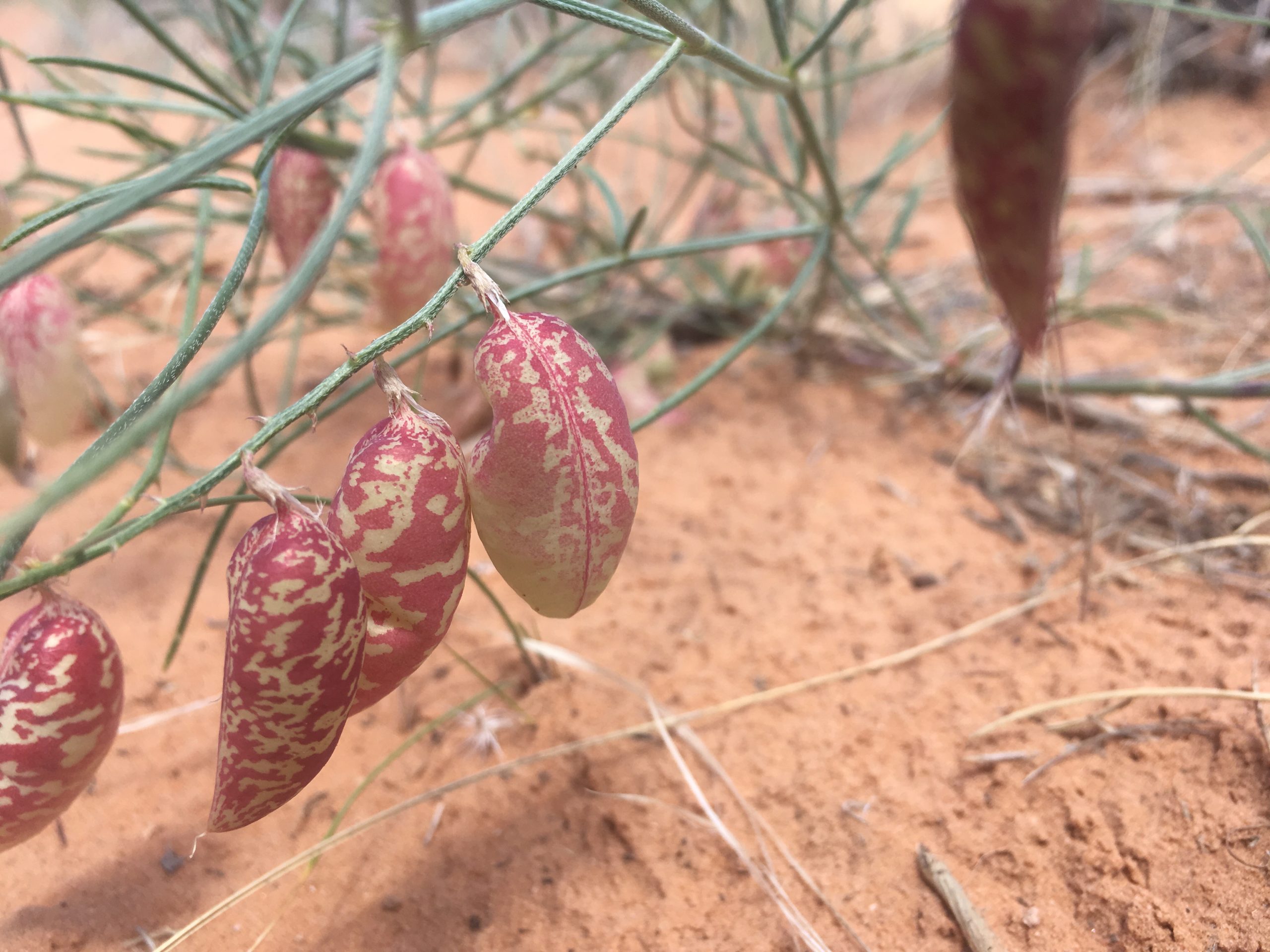Some information may be outdated.
In dryland systems, there can be more seed species below ground than there are plant species above. Here we talk with Dr. Akasha Faist, an ecologist who studies seed banks in the soil. We find out what kind of seeds there are, what they need to germinate, and how scientists study the surprisingly mysterious world of soil seed banks.
Science Moab: Can you explain what is meant by a seed bank?
Faist: The term “seed bank” has two different meanings. One is an area or building where people store seeds and perhaps, over time and with climate change, we’ll need those seeds to use in ecosystems and for food production. The other meaning, the soil seed bank, is where my research is focused. The soil seed bank is the reserve of seeds below ground. Say you had a crop of ten different species, and they all made it to seed. Eventually, they will drop those seeds, which stay below ground. The next year, five of those species come up, there are still seeds of ten species below ground waiting. So, in dryland systems, seed banks can be really important because we have such a variable climate. In a really wet year, those seeds that are waiting below ground may take advantage of that wet year and sprout up. I often use it as a picture into the history of what was once there and the potential future of what can be.
Science Moab: What kind of plants are usually found in a soil seed bank?
Faist: It varies by ecosystem and what has been growing above ground, but most commonly what is found are annual plants. These are the plants that germinate, sprout, flower, and drop their seed in one year. These are usually the densest seed banks because they are the ones that wait for the right conditions to germinate. If you think of drylands, in typical dry years, the annual plants wait underground. They don’t need many resources of water or energy to stay in that dormant state. Then they wait for a big rain year to come up. Actually, the seed bank below ground often has a higher diversity — more species, more number of species, and a higher number of seeds — than above ground. A seed bank can have high longevity and persist up to 200 years. So some species may not be seen above ground for some time, but the right climatic conditions will allow that species to germinate and come to the surface.
Science Moab: How do the seeds get buried underground?
Faist: In vernal pools, or seasonal wetlands that I’ve spent a lot of time researching, the soil shrinks and swells, so cracks develop. Since the seeds are tiny, they fall into these cracks. In forested systems, you actually can find a number of seeds in the litter layer. Then over time, dynamic processes like animal disturbances, floods, erosion or sedimentation move them around. Many seeds need scarification, some kind of physical breaking of the seed coat, to help them germinate. The wetting and drying process in combination with the shrinking and swelling of clays can actually cause that decomposition of the seed coat. So it just takes a little breakdown of the seed coat over time to stimulate the germination process.
Science Moab: Can you talk more about what the seeds are waiting for?
Faist: The seeds are waiting for the primo condition. One example in drylands is the “super bloom.” A super bloom happens where you get prolonged wet conditions in a very dry climate. When this happens, the seeds from the soil seed bank say “this is what we’ve been waiting for!” This super bloom of amazing flowers and other plants emerges on the surface which eventually replenishes the soil seed bank with new seeds that lie in wait for the next big event to trigger germination.
This interview has been edited for length and clarity. To learn more and listen to the rest of the Akasha Faist interview, visit www.kzmu.org/seeds_beneath_soil/.
Science Moab speaks with Dr. Akasha Faist about soil seed banks
Appreciate the coverage? Help keep local news alive.
Chip in to support the Moab Sun News.





